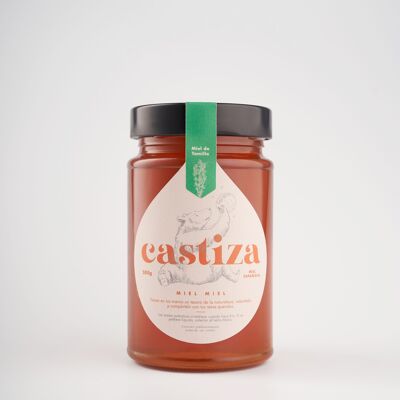


Our <strong>Thousand Flowers Honey</strong> comes from the apiaries that we have in the Montes de Toledo natural parks and during the summer in Segovia next to the Hoces del Duratón Natural Park, where plants such as rosemary, thyme, cistus, heather, holm oak, lavender..., and whose harvesting takes place in spring. \n \nMany areas do not have dominant vegetation, or the dominant plant is not used by bees (such as pine trees) and these are shared by other non-dominant plants. When the plant cover that bees take advantage of is made up of a great variety of plants of which some have more presence than others, but without a clear majority of any, the honey that is collected there is called "multifloral" or "milflores". ”. \n \n<strong> </strong> \n \n<strong>PAIRING:</strong> \n \nThis type of honey is the most used for everything, it is the most common on the market, and it is the type that usually adds a sweet taste to all kinds of preparations: hot or cold drinks (infusions, soft drinks, juices... this summer have The classic lemon juice with water and honey is always in the fridge to cool off), breakfasts and snacks, ice creams, dairy products, fish, white meats, desserts (fruits with honey, oranges, strawberries, apples, bananas, pineapples…) \n \n \n \n<strong>PROPERTIES:</strong> \n \nEnergetic and devoid of fat, flower honey is a perfect substitute for refined sugar, as well as an ideal supplement for athletes and people with some nutritional deficit. \n \nIn its composition we recognize organic acids, enzymes and various minerals. \n \n<strong>ORGANOLEPTIC CHARACTERISTICS:</strong> \n<ul> \n <li><strong>Colour</strong>: light amber and extraordinarily bright surface.</li> \n <li><strong>Aroma</strong>: Very floral, intense and persistent.</li> \n <li><strong>Taste</strong>: sweet, with clear aromatic notes on the palate.</li> \n <li><strong>Touch</strong>: rapid crystallization in medium to fine crystals.</li> \n</ul>





